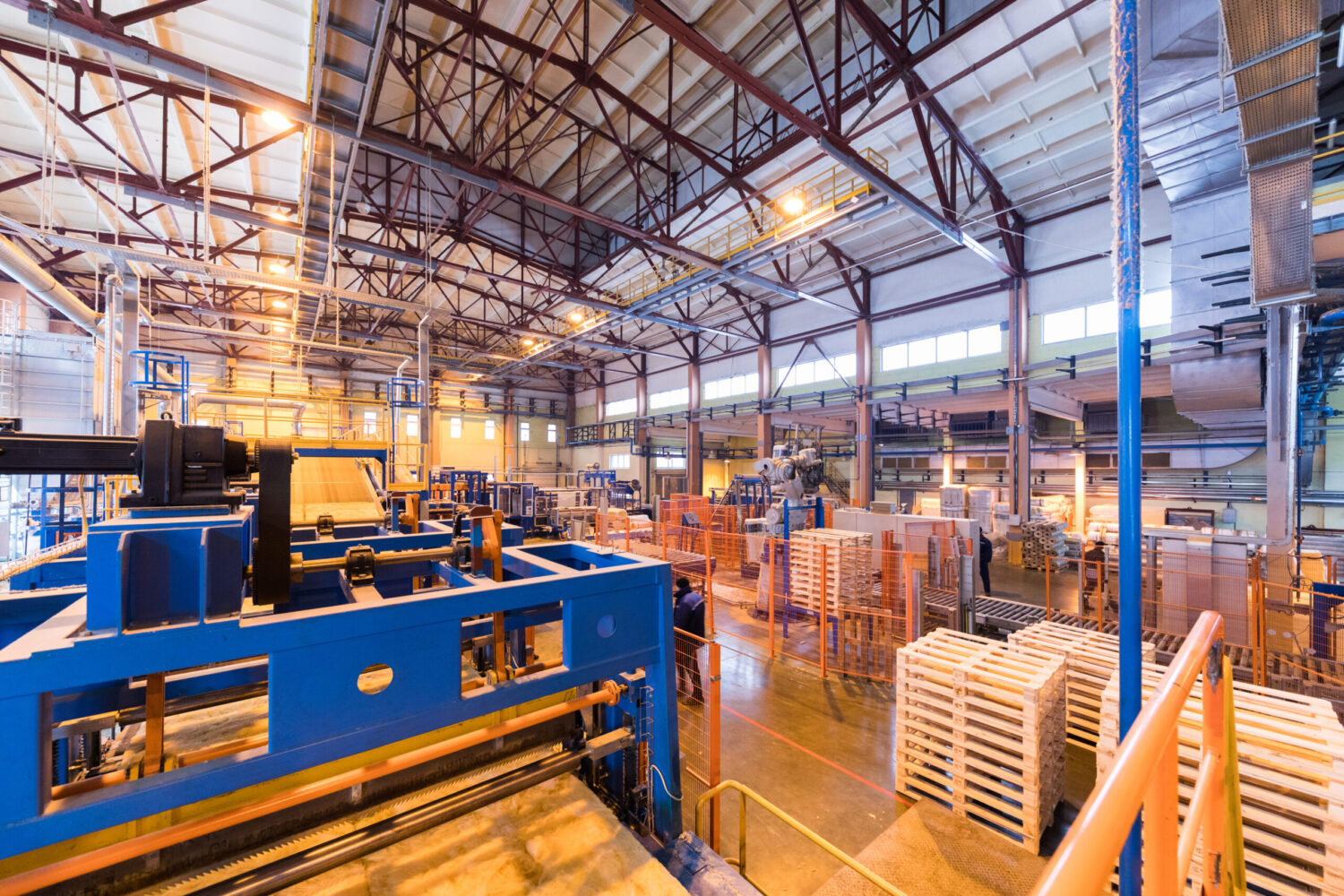Types of Errors in Manufacturing
Manufacturing errors seem like an inevitable part of the production process, giving rise to quality defects in manufacturing that can significantly affect the final product. These defects can vary in severity – from minor discrepancies that subtly downgrade the product’s quality, to major flaws rendering the product unsafe or unsuitable for use. In today’s hyper-competitive and consumer-driven market, such manufacturing errors are not just a direct threat to the product’s reliability but also pose substantial risks to the manufacturer’s reputation and customer relationships.
By embracing technological innovations, like manufacturing execution systems (MES), companies can automate various aspects of their production process to minimize the chance of human error. Regular equipment maintenance and calibration can eliminate potential mechanical issues, while improved training programs and updated SOPs can ensure all personnel are adequately equipped to perform their roles without error. In this context, let’s delve deeper into understanding manufacturing errors, their causes, and effective strategies to prevent them.
Understanding Manufacturing Defects vs Design Defects
It is essential to differentiate between a manufacturing defect and a design defect. A manufacturing defect is an anomaly that arises during the production process, rendering the product different from its intended design. This could be due to manufacturing errors and omissions, equipment failure, or misalignment. Conversely, a design defect implies that the product’s design itself is inherently flawed or unsafe, despite it being made correctly according to the design specifications.
Manufacturer Defect Meaning
A manufacturer defect can be defined as an unintended deviation that occurs during the manufacturing process. This fault makes the product deviate from its intended design or standard, impacting its functionality, safety, or aesthetics. Notably, a manufacturer defect pertains solely to the production process and is not linked to the product’s conceptual design or use.
Manufacturing Defect Examples
Let’s consider a commercial bakery to illustrate manufacturing defects. Suppose a batch of bread has been accidentally over-baked due to an issue with the oven’s temperature regulation. The over-baked bread is a manufacturing defect since it deviates from the expected quality and taste of the product, due to an error in the production process.
For a design defect example in a bakery context, consider a new type of pastry that the bakery is trying to introduce. If the recipe itself is flawed – perhaps it calls for too much sugar – and all the pastries turn out overly sweet despite being made exactly according to the recipe, then this would be a design defect. The problem lies in the recipe (the design), not the process by which the pastry was made.
Examples Sources of Batch Manufacturing Defects
Despite being a time-tested and widely used process. Numerous errors can manifest throughout this intricate process, from initial sourcing to the final production stage. These mistakes, if left unchecked, can greatly impact the quality of the final product and pose significant operational challenges for manufacturers. Let’s explore some common ones.
Improper Weighments
An all too common manufacturing error is improper weighment of ingredients. Manufacturing processes often rely on exact proportions of various components, so any deviation in weights can impact the quality or functionality of the finished product. Accurate weighing is especially crucial in industries such as food and pharmaceuticals, where even slight variances can have significant consequences.
Incorrect Material
In batch manufacturing, using the wrong ingredient or material can lead to disastrous results. Nothing matches the terror of realizing the product has shipped with the incorrect labels on them. Not only can this lead to off-spec products, but it can also cause serious safety concerns, especially in sensitive industries such as food processing or pharmaceuticals.
Defective Raw Material
Utilizing defective or sub-standard raw material is another common cause of manufacturing defects. Such materials may not meet the required specifications for quality, causing the finished products to be defective or inferior in quality.
Improper Calibration of Equipment
Improper calibration of equipment, including scales, can lead to errors in the quantities of components used. This can affect the quality of the finished product and may result in batches that do not meet the required specifications.
Inconsistent Timing
In many manufacturing processes, the timing of each step is critical. If these timings are not consistent, it can affect the quality of the finished product. For example, a baking process that requires a specific bake time, if varied, could lead to undercooked or overcooked products.
Lack of Traceability
A well-documented electronic batch record is crucial in some sections manufacturing. It is not enough to produce the product correctly; manufacturers must also document that they have done so. Without this, if a problem arises with a batch, it can be difficult to identify where the issue occurred.
Contamination
In industries like food and pharmaceuticals, contamination of a batch can lead to significant waste and financial loss. Contamination could occur from foreign matter, causing the batch to be discarded to ensure consumer safety.
Incorrect Storage and Handling
Proper storage and handling of both raw materials and finished products are essential in manufacturing. Certain materials may require specific storage conditions, and failure to meet these could compromise product quality.
Machinery Breakdown
A breakdown or failure of machinery can halt production and result in product wastage, especially if the issue occurs midway through a batch. Regular equipment maintenance can help prevent such failures.
Outdated SOPs (Standard Operating Procedures)
Outdated SOPs can lead to manufacturing errors if they do not reflect changes in machinery, product formulation, or regulations. It is vital to keep SOPs updated to maintain consistency and quality in the manufacturing process.
Failure to Meet Regulatory Standards
In industries like pharmaceuticals and food, there are strict regulations that must be adhered to. Failure to meet these standards can lead to significant consequences, including the rejection of entire batches or even the loss of customers and reputation.
How to Reduce Human Error in Manufacturing
Manufacturing errors and omissions in the food and chemical industries could potentially lead to dangerous situations, such as allergies due to mislabeling or contamination. In pharmaceuticals, errors in labeling could lead to incorrect usage, posing severe health risks. At a minimum the errors can prompt the requirement for rework. A robust Manufacturing Execution System (MES) can help prevent and limit the impacts of manufacturing errors by addressing common issues in the production process. Let’s examine how an effective MES system can offer solutions to the typical problems identified earlier.
Improper Weighments → Scale Integration
To ensure accurate measurement of ingredients and materials, an MES system is typically integrated directly with scales. This prevents mistakes due to manual data entry and ensures the right quantities are always used in production. This has the benefit of
Wrong Material → Barcode Control
An MES system equipped with barcode scanning technology can verify materials before they’re used in production. This helps prevent the use of incorrect materials, contributing to a more consistent and quality product output.
Defective Raw Material → Testing of Raw Materials
To prevent defective raw materials from entering the production process, an MES system can enforce an electronic quarantine. By testing materials upon receipt and implementing barcode tracking, the system ensures only qualified materials are used.
Improper Calibration of Equipment → Enforced Calibration Schedule
An MES system can maintain a trackable calibration schedule for all equipment. Regular reminders ensure that machinery is always properly calibrated, which enhances the consistency of the output and reduces errors.
Inconsistent Timing → PLC Integration
Integration of Programmable Logic Controllers (PLCs) with the MES software can standardize and automate the operation of equipment. This ensures each manufacturing process is executed consistently, reducing the chance of timing-related errors.
Lack of Traceability → Electronic Batch Records
An MES system can create an Electronic Batch Record (EBR) and provide full traceability . The EBR will log every detail and signature of the production process. This enhances traceability, allowing manufacturers to quickly identify and rectify any issues that may arise and give peace of mind to potential customers.
Contamination → Enforced Cleaning and Sanitization
An MES system can enforce the adherence to cleaning SOPs, reducing the risk of product contamination. Regular reminders ensure that cleaning and maintenance protocols are consistently followed and tracking signatures to provide a paper trail of successful cleaning cycles.
Incorrect Storage and Handling → Warehouse Management Software
MES systems can incorporate warehouse management software to enforce storage rules. This ensures materials are stored and handled correctly, thereby maintaining their quality. This has the added benefit of letting you quickly track down material in your warehouse to speed production and fulfillment.
Machinery Breakdown → Preventative Maintenance Schedule
Implementing a preventative maintenance schedule within the MES system helps avoid unexpected machinery breakdowns. Regular maintenance enhances equipment longevity and reduces downtime.
Outdated SOPs → Tracked Recipe Revisions
A good MES system keeps track of all current formulations and SOPs, ensuring the manufacturing process is always up to date. This helps avoid errors and inconsistencies that can arise from following outdated procedures.
Failure to Meet Regulatory Standards → MES Software
MES Software helps ensure all of the above are prevented and keeps your factory on the right side of any audit and ever evolving regulatory standards. MES aids in maintaining regulatory compliance. This ensures the manufacturing process adheres to all necessary safety and quality standards.
Choosing the Best MES Software For Your Manufacturing Needs
When it comes to selecting an MES software for your manufacturing needs, it’s essential to understand that there is no one-size-fits-all solution. Different industries and individual businesses have unique requirements, and the MES system you choose should be versatile enough to meet these specific needs.
Adaptable to Your Unique Process
Your manufacturing process is unique. It would help if you had an MES software that can adapt to your way of doing things, rather than forcing you to conform to its limitations. Look for a system that can be easily customized to suit your operations and that has experience in what you make.
Integration Capabilities
Seamless integration with your existing systems, like ERP and Quality Management Systems, is vital. It ensures smooth data flow across various functions, providing real-time information and insights to improve decision-making. Does it integrate to the accounting software of your choice?
Regulatory Compliance
The right MES system will help you maintain compliance with the latest industry-specific regulations. It should support adherence to regulatory standards, ensuring that your manufacturing processes are always in line with the best practices.
Robust Reporting and Analytics
Accurate, timely data is the lifeblood of modern manufacturing operations. Your MES system should provide robust reporting and analytics capabilities, turning data into actionable insights for continuous improvement.
Scalability
Your MES software should be able to grow with your business. It must be scalable and flexible enough to accommodate your evolving needs as your business expands and introduces new products or processes.
User-Friendly Interface
A user-friendly interface makes it easier for your team to adopt the new system. The easier the system is to use, the more likely your team will adopt it effectively, reducing training time and increasing productivity.
Towards the end of your selection process, you might find that a system like Mar-Kov’s MES meets these criteria. However, it’s crucial to remember that the best MES software is one that fits your specific needs, providing a comprehensive solution for your unique manufacturing environment. Always prioritize what is best for your operations over what might be the most popular or widely-used software. After all, in manufacturing, the key to success often lies in the details, and a tailored solution like Mar-Kov can help you master them. Book a call with us today to learn more.




